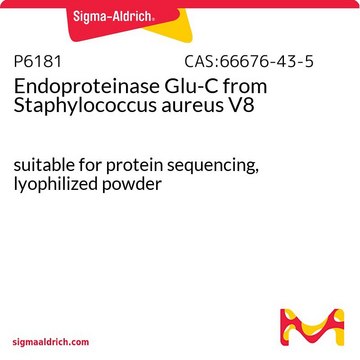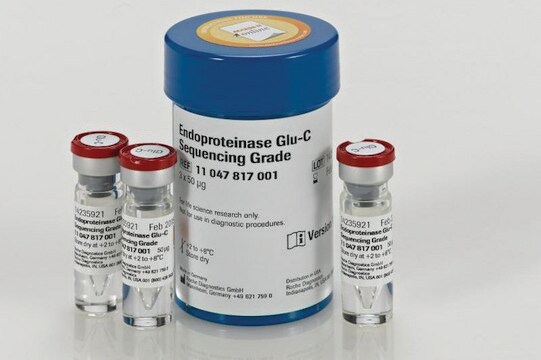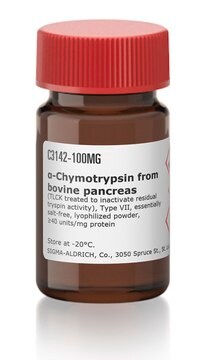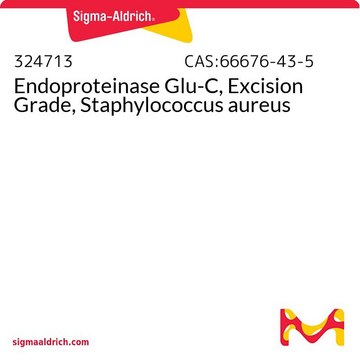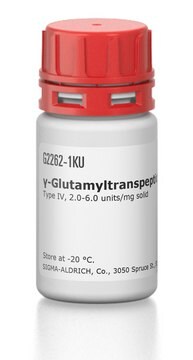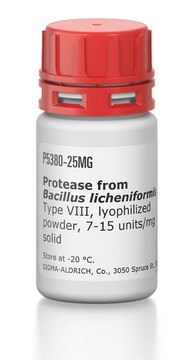P2922
Endoproteinase Glu-C from Staphylococcus aureus V8
Type XVII-B, lyophilized powder, 500-1,000 units/mg solid
Synonym(s):
V8 Protease
About This Item
Recommended Products
type
Type XVII-B
Quality Level
form
lyophilized powder
specific activity
500-1,000 units/mg solid
mol wt
29 kDa
purified by
chromatography
shipped in
wet ice
storage temp.
−20°C
Gene Information
Staphylococcus aureus subsp. aureus MW2 ... sspA(1003044)
Looking for similar products? Visit Product Comparison Guide
Application
Biochem/physiol Actions
Unit Definition
Signal Word
Danger
Hazard Statements
Precautionary Statements
Hazard Classifications
Resp. Sens. 1 - Skin Sens. 1
Storage Class Code
11 - Combustible Solids
WGK
WGK 3
Personal Protective Equipment
Certificates of Analysis (COA)
Search for Certificates of Analysis (COA) by entering the products Lot/Batch Number. Lot and Batch Numbers can be found on a product’s label following the words ‘Lot’ or ‘Batch’.
Already Own This Product?
Find documentation for the products that you have recently purchased in the Document Library.
Customers Also Viewed
Related Content
Enzymatic Assay of Endoproteinase Glu-C (EC 3.4.21.19)
Our team of scientists has experience in all areas of research including Life Science, Material Science, Chemical Synthesis, Chromatography, Analytical and many others.
Contact Technical Service